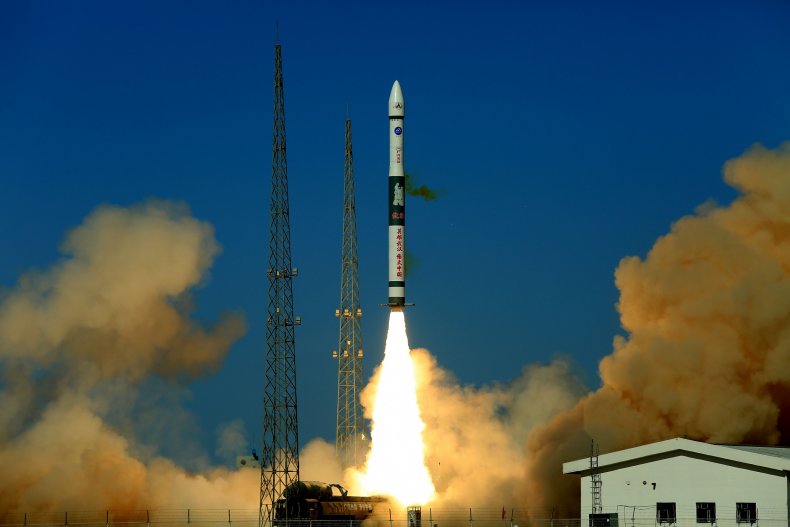A large Chinese rocket thought to be out of control is expected to crash back to Earth at some point on Saturday, but nobody knows where exactly.
The Long March 5B was launched from China’s Hainan island on 29 April and was the first of 11 missions needed to complete a permanent Chinese space station. The rocket carried with it the Tianhe module, which contained what will become the living quarters for three astronauts occupying the station once it’s completed.
China’s space agency did not confirm whether the rocket was out of control or whether its descent will be controlled.
However, a Chinese foreign ministry spokesperson said on Friday that the upper stage of the rocket was expected to burn up once it re-enters the Earth’s atmosphere. The Global Times, a Chinese tabloid published by the country’s Communist Party’s flagship People’s Daily newspaper, dismissed reports of an out-of-control descent as “western hype”, adding the situation was not concerning.
In a statement released earlier this week, Defense Department spokesman Mike Howard said the U.S. Space Command was tracking the trajectory of the rocket, which is approximately 100 feet tall and weighs 22 tons.
Howard added that while the rocket was expected to re-enter the Earth’s atmosphere “around May 8”, the “exact entry point into the Earth’s atmosphere” will not be known until just hours before the rocket re-enters the atmosphere.
The Chinese foreign ministry spokesman, meanwhile, added that Beijing will release information about the rocket’s re-entry in a “timely manner”.
The rocket’s blistering speed—it is estimated to be traveling at around 18,000 miles per hour—makes predicting the area it will plunge back to Earth an incredibly difficult exercise. In preparation for the rocket’s re-entry, the European Space Agency has designated a “risk zone” which spans “any portion of the Earth’s surface between about 41.5 N and 41.5 S latitude.”
To put the statement into context, the area includes most of North America south of New York, South America, the entirety of Africa and Australia, a portion of Europe including Spain, Portugal, Italy and Greece and parts of Asia just south of Japan.
“The thing is traveling at like 18,000 miles an hour. And so if you’re an hour out at guessing when it comes down, you’re 18,000 miles out in saying where,” Jonathan McDowell, an astrophysicist at the Astrophysics Center at Harvard University was quoted as saying by CNN earlier this week.
“If you want to bet on where on Earth something’s going to land, you bet on the Pacific, because Pacific is most of the Earth. It’s that simple.”
During a media briefing this week, US Defense Secretary Lloyd Austin admitted the suggestion of shooting the rocket out of the sky to prevent it from crashing back to Earth uncontrolled was not practical.
“We have the capability to do a lot of things, but we don’t have a plan to shoot it down as we speak,” Austin told reporters on Thursday.
“We’re hopeful that it will land in a place where it won’t harm anyone. Hopefully in the ocean, or someplace like that.”
Aerospace Corp, a federally funded, non-profit organization which supports national security space programs, said it expects the debris to hit the Pacific near the Equator after passing over the U.S.
Aerospace Corp is providing updates about the core status of the rocket via its Twitter feed and on its website, while the U.S. Space Command is publishing daily updates on the rocket expected landing point on its space-track.org.
The good news is that the risk of falling debris causing damage is rather remote, McDowell added.
“The risk that there will be some damage or that it would hit someone is pretty small—not negligible, it could happen—but the risk that it will hit you is incredibly tiny,” he said.

STR/AFP/Getty Images


Comments